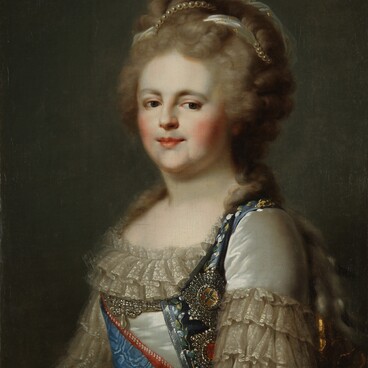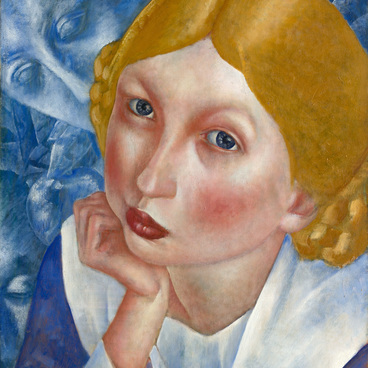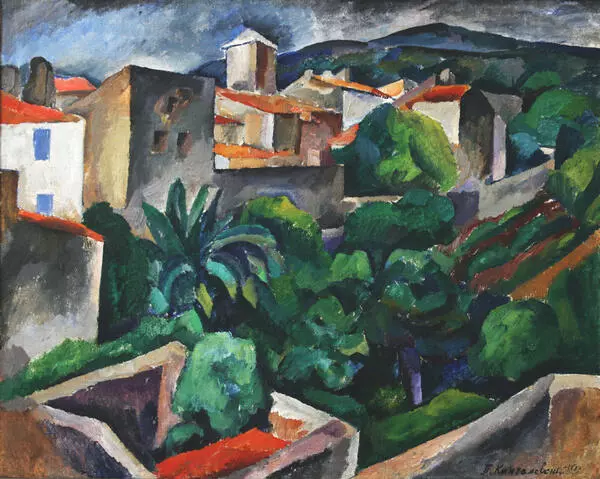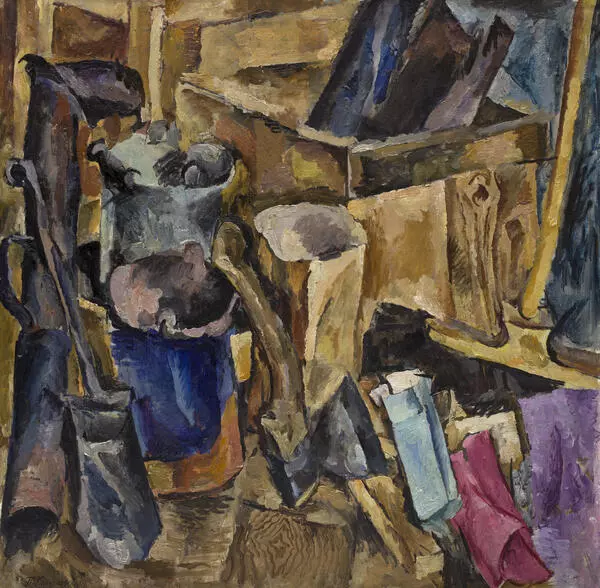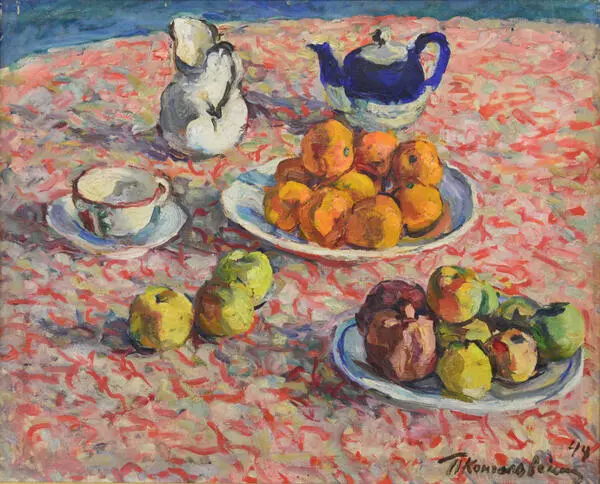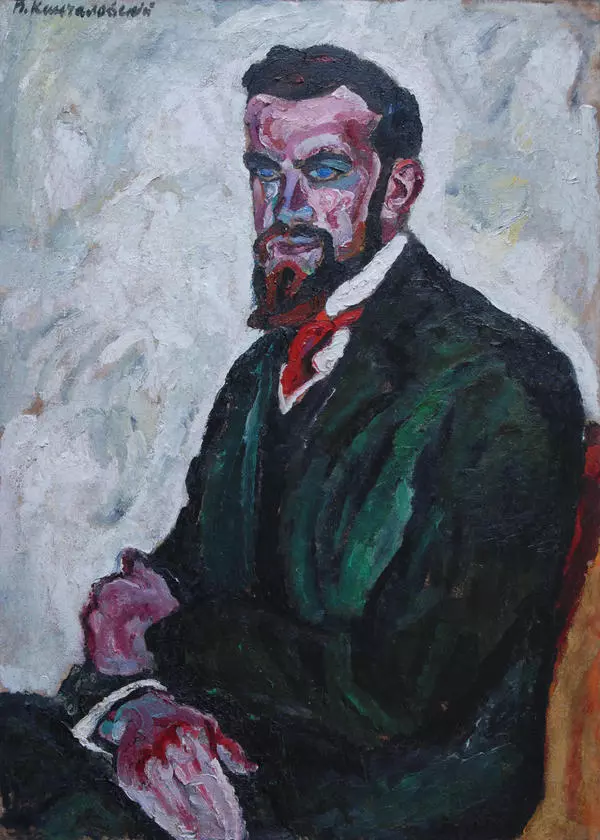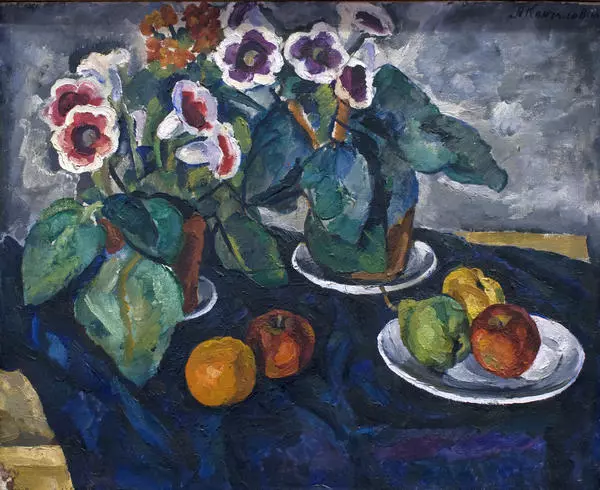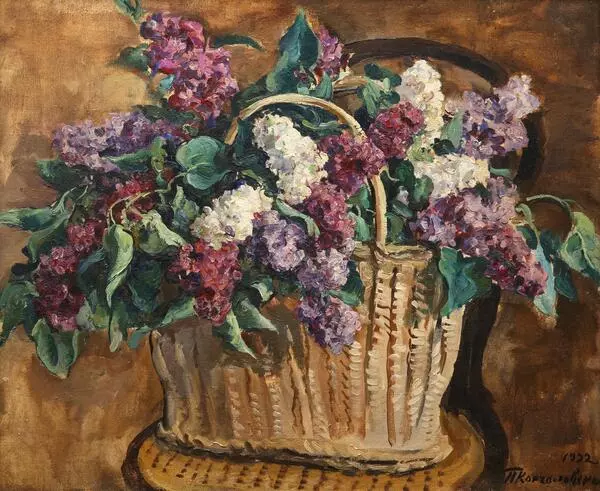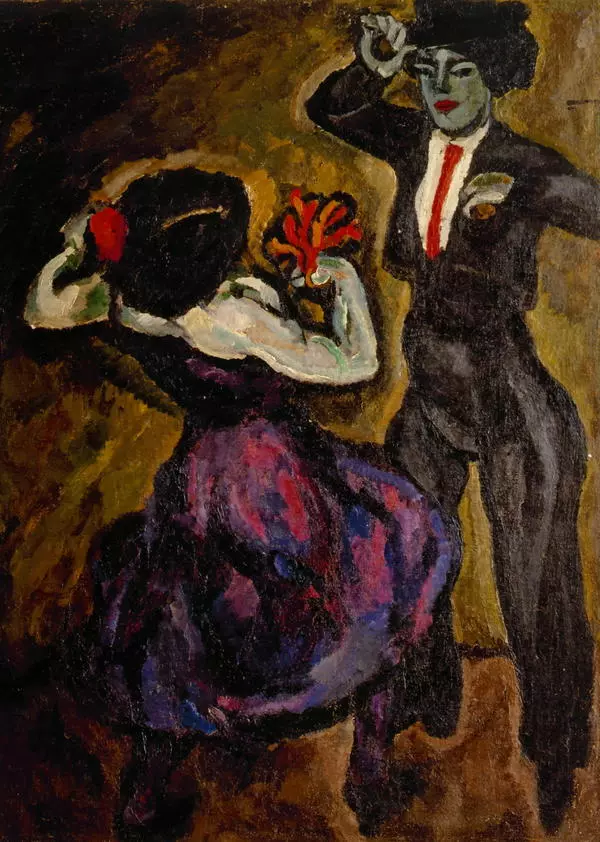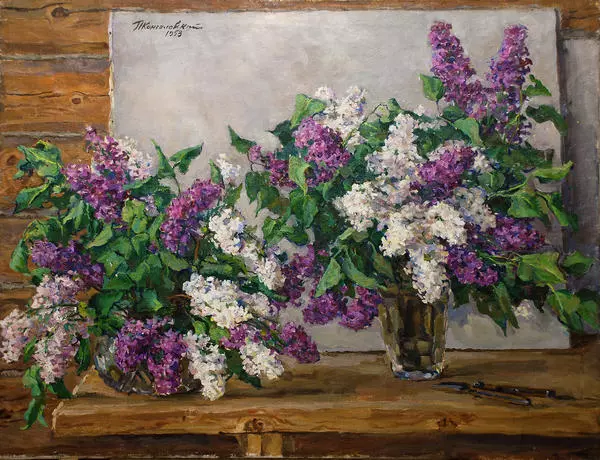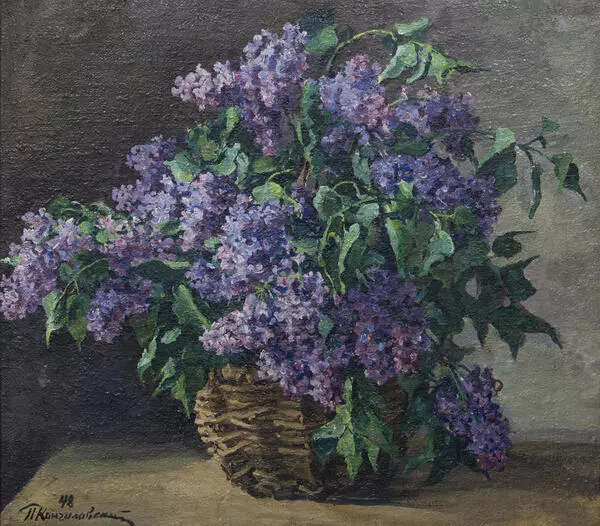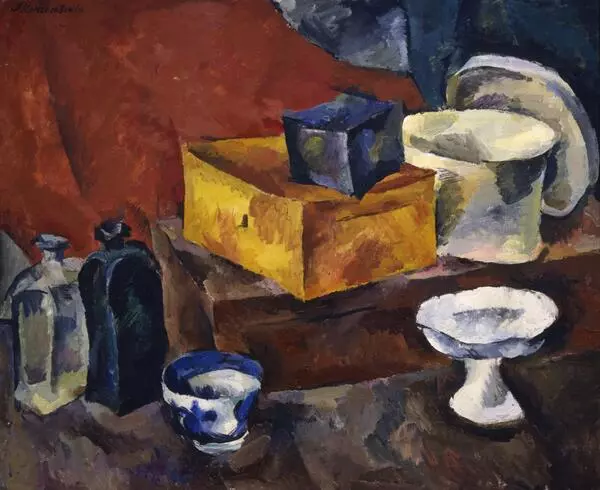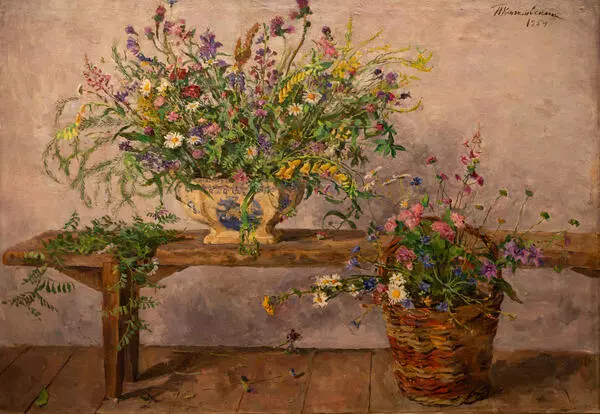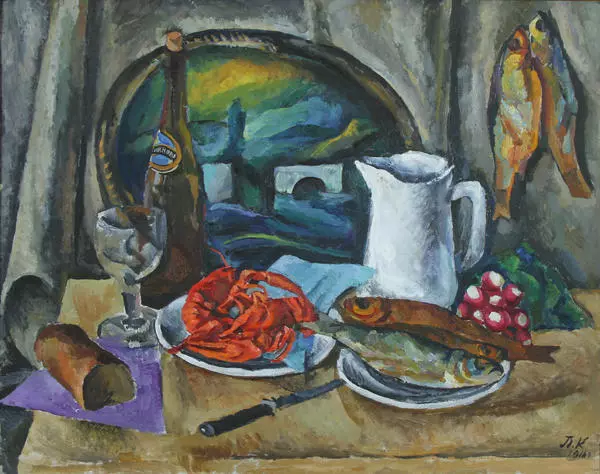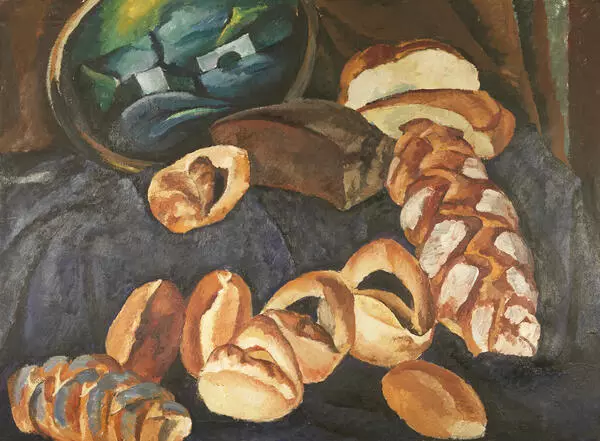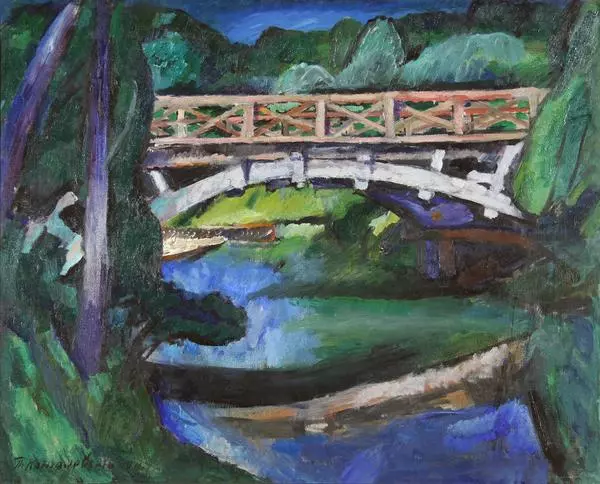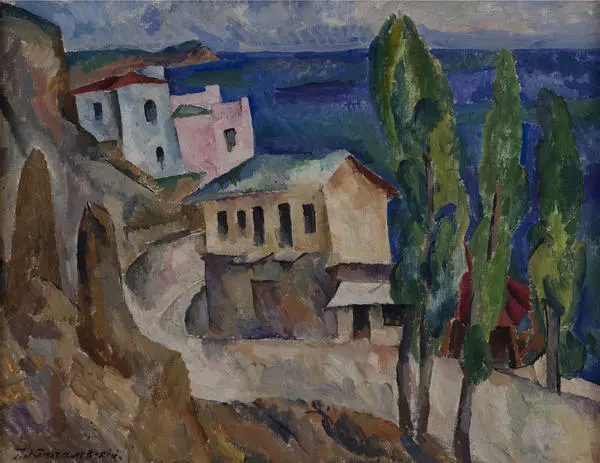Pyotr Konchalovsky came from the creative family of a famous writer. The artist was educated at the Private Academy of Arts in Paris and the Higher Art School at the Imperial Art Academy in St. Petersburg. His work was strongly influenced by the post-impressionists.
Pyotr Konchalovsky became one of the co-founders of the association ‘Jack of Diamonds’ in 1911, which brought together prominent representatives of the early Russian avant-garde. The society was created in opposition to the principles of academism and symbolism. The name itself was intended to shock the public and critics. The creativity of the ‘Diamonds’ was based on bright local colors, sensations of textured brushstroke, and generalized form. The paintings amazed with the weight and density of images, and the everyday scenes, rude in their simplicity. It may be said that the new association destroyed the sublime detachment of the old art, making it more mundane, letting life itself into it.
In 1912-1913, the artist started leaning towards Cezanneism and studied Cubism. In his work, he began to show great interest in still life and landscape painting.
The portrait of Baron Konstantin Rausch von Traubenberg (1871-1935) embodied the characteristic features of the artist’s painting of that period. The Baron is depicted sitting on a chair, his right hand is in his pocket, he is dressed in a smart suit, a flower is attached to the lapel. The color range is based on three main local colors of green, red, and black. Additionally the master introduces white, purple and gray. The model is depicted deliberately roughly, the volumes are generalized and enlarged, and the flatness of the composition is felt. The painting is decorative in its execution. Pyotr Konchalovsky was inspired by the style of folk popular prints and drew ideas from shop signs, which was reflected in his work.
Depicted Rausch von Traubenberg came from an aristocratic family. He received a versatile education. In adulthood, he was engaged in the creation of miniature portraits, plaster and bronze figurines. At the same time, he collaborated with the Imperial Porcelain Factory, for which he created a series of porcelain figurines, as well as with the Faberge Company.
Pyotr Konchalovsky became one of the co-founders of the association ‘Jack of Diamonds’ in 1911, which brought together prominent representatives of the early Russian avant-garde. The society was created in opposition to the principles of academism and symbolism. The name itself was intended to shock the public and critics. The creativity of the ‘Diamonds’ was based on bright local colors, sensations of textured brushstroke, and generalized form. The paintings amazed with the weight and density of images, and the everyday scenes, rude in their simplicity. It may be said that the new association destroyed the sublime detachment of the old art, making it more mundane, letting life itself into it.
In 1912-1913, the artist started leaning towards Cezanneism and studied Cubism. In his work, he began to show great interest in still life and landscape painting.
The portrait of Baron Konstantin Rausch von Traubenberg (1871-1935) embodied the characteristic features of the artist’s painting of that period. The Baron is depicted sitting on a chair, his right hand is in his pocket, he is dressed in a smart suit, a flower is attached to the lapel. The color range is based on three main local colors of green, red, and black. Additionally the master introduces white, purple and gray. The model is depicted deliberately roughly, the volumes are generalized and enlarged, and the flatness of the composition is felt. The painting is decorative in its execution. Pyotr Konchalovsky was inspired by the style of folk popular prints and drew ideas from shop signs, which was reflected in his work.
Depicted Rausch von Traubenberg came from an aristocratic family. He received a versatile education. In adulthood, he was engaged in the creation of miniature portraits, plaster and bronze figurines. At the same time, he collaborated with the Imperial Porcelain Factory, for which he created a series of porcelain figurines, as well as with the Faberge Company.


